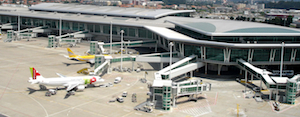
An auction will take place on Feb. 6 for the concessions of three important airports in Brazil. The investment, which includes construction projects to expand the airports, will support Brazil's tourism for the 2014 World Cup.
The airports are located in Guarulhos in the city of Sao Paulo; Viracopos, located in Campinas in the interior of Sao Paulo state, and Brasilia in the Federal District. The three terminals together host 30% of passengers, 57% of cargo and 19% of aircraft operating in the country.
The minimum bids will require substantial financing. Guarulhos will cost at least $1.83 billion for a 20-year concession. Viracopos is set at a minimum of $805.6 million for a 30-year concession. Brasilia rings up at $312.6 million for a 25-year concession.
At least one of the companies in a bidder's consortium has to have at least five years of experience in the management of airports with over five million passengers per year, according to the public notice. As Brazil's private sector has little or no know-how of operating airports, the participation of foreign players has become mandatory.
The winning bidders would take over the terminals in May 2012 and need to make investments of at least $1.5 billion to modernize the three airports in time for the 2014 World Cup in Brazil.
"They will be subject to significant and strict fines if they fail to complete the construction work for the World Cup," warns Cleverson Aroeira, executive secretary of Brazil's civil aviation department.
The investment program includes the revitalization of Guarulhos airport's runway and aircraft parking area, which will be increased to 800,000 sq meters from 491,000 square m. It also includes the construction of a third terminal that is targeted to host seven million passengers per year.
At Viracopos airport, the bid calls for construction of a new terminal for 5.5 million passengers per year and expansion of runway and aircraft parking space to approximately 600,000 sq m from 190,000 sq m.
The Brasilia airport program includes the construction of a new terminal for two million passengers per year, as well as an increase to 400,000 sq m from 181,000 sq m in aircraft parking spaces. It also will include the construction of complementary buildings.


Post a comment to this article
Report Abusive Comment